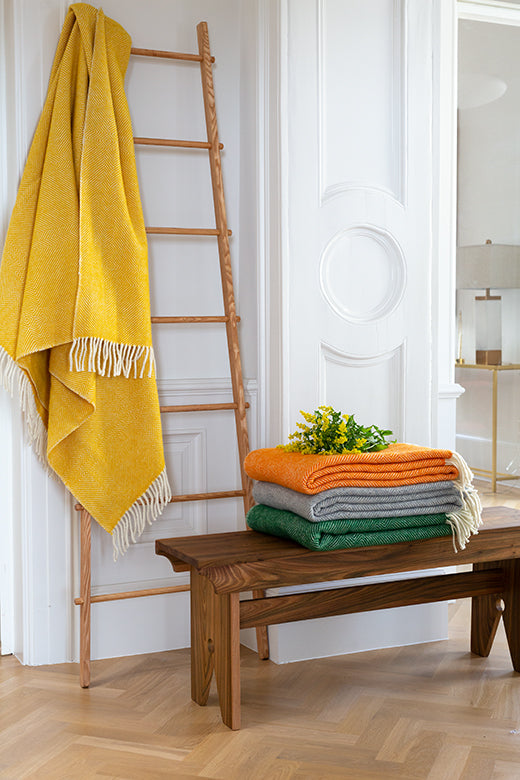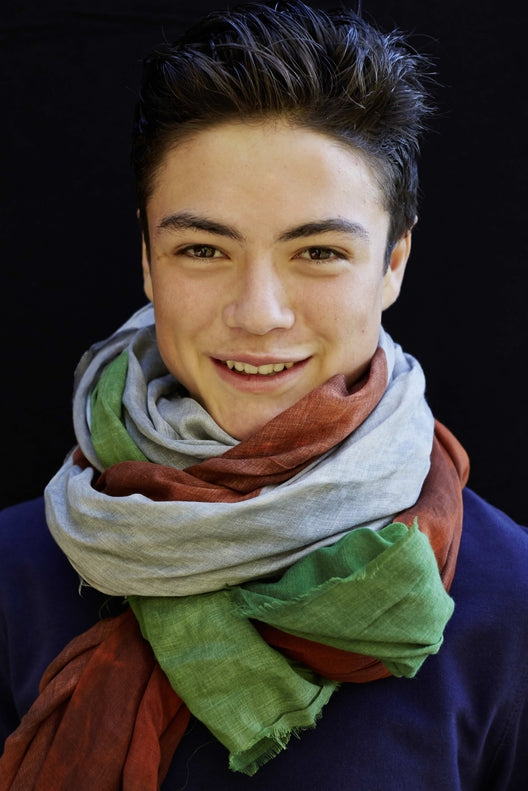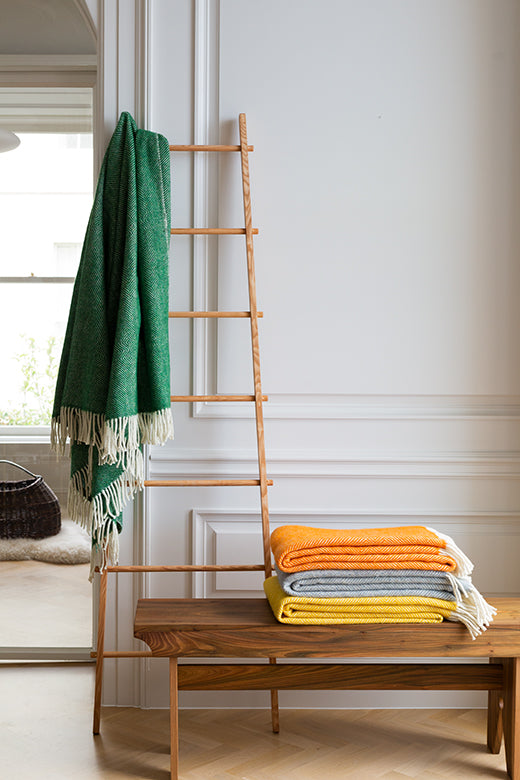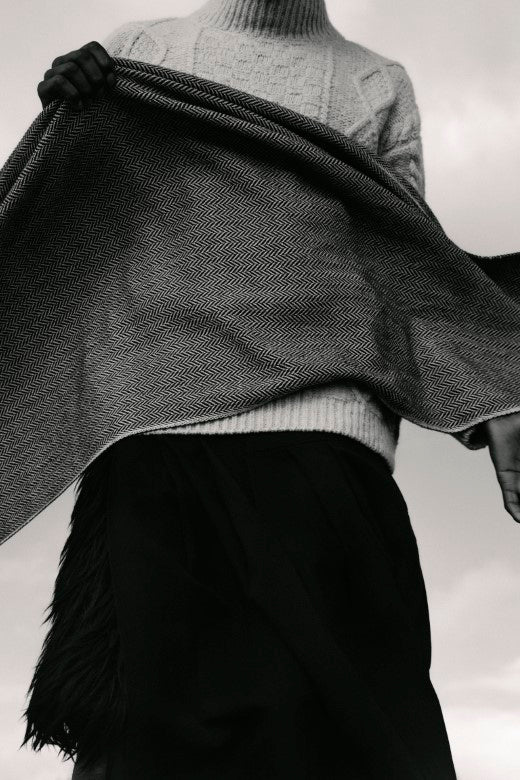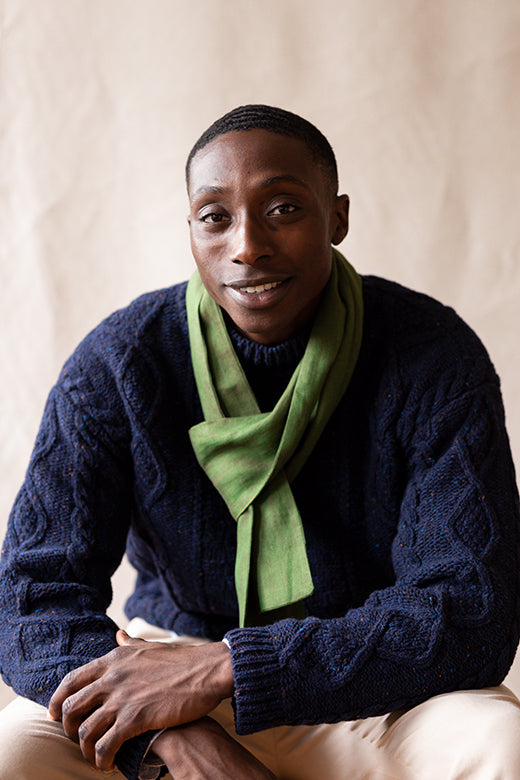Journal
Subheading
In Conversation With Ruth Ribeaucourt – Owner and Editor in Chief FAIRE Magazine

How would you describe yourself and what you do?
Someone recently called me a 'restless creative' and I think that's a pretty apt way of describing me. I'm at a point in my life where I feel like anything is possible. I don't know how I got here exactly – but I have come to realise that we really can do anything we put our minds to with enough passion, intention, tons of hard work and just the right dose of crazy.
I had to figure out my first major career pivot in 2010 when I left behind my career at the Irish office of Walt Disney Studios. I initially wasn't feeling too positive about my job prospects in the wilds of Provence – with no driving licence and a toddler to look after but very slowly I carved a new path for myself. I signed up for virtual workshops, I learnt new skills – some very basic essentials like how to cook (age 30) and other less basic skills like web design for dummies. I slowly built back my confidence and met some incredible people in the process.
The tool that ultimately changed my creative trajectory was the camera. It has enabled me to capture and share my story but more importantly those of other creatives. Photography has given me the means to lift their voices and stories and share them with the world. It's a bit like a drug for me ...
The last decade hasn't exactly been a traditional linear 'career' journey – instead, it's been much more intuitive, I have learned to listen to my gut with everything I do and I find myself saying yes and jumping headfirst into new opportunities and projects ... I figure I can always 'feel' out the details later.
Where did the idea of FAIRE come from and how did you make it happen? Where do you even begin with finding content for a magazine as beautiful as this?
About three years ago I was asked to become a contributor for an established American magazine and it meant shooting both the photography and writing the stories about creative women and their journeys. I had never done either before – but I dampened the niggling voice of doubt and responded to the job offer saying that I would love to do it. In many ways, it was the most unexpected gift to be offered this role. It meant I could spend a day or two in the presence of women I admired, soaking up their very unique way of living and creating and then share their stories with the world. It also meant that with every shoot I would grow my own skills as a photographer and storyteller, learning and growing as an artist myself and at the same time supporting my creative community.
I jokingly call myself the 'pretend publisher' because I truly never intended to make my own magazine. In late 2019 I was offered the opportunity to create and guest-edit a special issue magazine for the American magazine, What Women Create. For more than a year I pulled together the most dreamy stories from around the world, and it gave me incredible insight into how to create a magazine. I was involved in every step of the process – from curating the stories to editing the texts, and finally laying the stories out. I found the creative side to this experience thrilling but I also realised very quickly that if I wanted to publish the stories exactly as I felt they deserved to be published, without compromising my creative vision, then I would have do it on my own.
At the time my special issue magazine was published (October 2021) I received lots of messages of encouragement – many egging me on to finally write my own book. But strangely when I thought about writing a book, it felt too insular, something one does in isolation of others. I had had enough of being introspective after a year of confinement and I craved an outlet for collaboration. I realised that a magazine would allow me to work with so many more people and share and support others too. It just felt right – a way to bring people together to celebrate creativity after a year of horrors.
I found myself starting to daydream about the types of stories I would love to read if ever I could create my own magazine. There was a certain freedom in not being held down by preconceived ideas as to how it should be presented, and what it had to look like. I sensed that within my creative community that there was a genuine interest in more considered, diverse, intimate storytelling, and I knew that I could do it in a kinder, more authentic way than most mainstream magazines who barely pay lip service to creatives and the world of artisanal makers.
There were many times when I very nearly talked myself out of it - there was a huge part of me that felt that launching a brand new print publication in the middle of a pandemic was a recipe for disaster. Especially as so many shops across the world were still locked down or only just reopening after months of lockdown.
So in December 2020, I started to build a framework for the stories and storyboarding how I wanted FAIRE to look and feel. I also made a decision that I would only proceed with Issue one if I could crowdfund enough to cover our costs - it was really important that I not put my family under more financial risk.
Around this time I was very fortunate that Marlene Wessels - art director at Image and Image interiors - jumped on board to design our first issue - that was a game-changer. A little over a month later, on 27 January 2021, we launched the idea of FAIRE into the world with a Kickstarter campaign. To my absolute bewildered surprise, we surpassed our initial goal after only four days - it was really at this point that it started to feel real.
I have been absolutely blown away by the emotional responses from readers - I receive emails and notes every day with quotes they’ve written down or messages about their favourite stories and why they resonated. People write to tell me the magazine smells amazing, or that they have read it four times already, and there are others that tell me they are savouring it story by story, drawing it out, making it last like unwrapping presents on Christmas day.
I am so proud of the stories on our pages, of all the incredible photographers who visibly care about the subjects they are sharing; the searching, intimate words from creatives that peel back the layers of a life revealing the courageous, gristly moments as well as the joyful, wondrous parts.
I take my new job very seriously and it really is a privilege and a responsibility to tell these stories in the most beautiful, authentic way possible.
Describe your typical day. Where do you look to for inspiration for your own work?
Once I’ve done the school run I’ll usually head out for an hour walk. I have a circuit that takes me down through the cobbled streets of my village, through olive and cherry groves, across a little river and then back up the edge of the Luberon mountains. It gets me out of my morning brain fog and ready to tackle the day.
My team are all working remotely, our editor Kristin Jensen works in Co. Louth and our designer Maggy Villaroel works from Palma in Mallorca.
Our issue two is shipping now to readers, we are finished editing and going to layout on Issue three and at the same time I am checking in with all of the creatives and photographers for Issue four (which will come out in January '22). I always have to be working 6-8 months ahead.
As we are very much in start-up mode, I’m juggling about five different roles at all times; editor in chief, head of sales (pitching to independent stockists and negotiating with distributors), chief financial officer (raising invoices, paying bills and juggling budgets) and then marketing and communications (I manage our newsletter and all our social media) and I’m also a photographer and writer for FAIRE.
In an ideal world, I would love to be able to employ an assistant full time and perhaps by early 2022 it will be feasible as I do feel a little like my head is spinning on my shoulders. I switch from one task to the next all day long.
I work from home unless I am out on a shoot. I’m trying to only publish one of my shoots in each issue as I feel it is critical that I use the magazine to share as many diverse creative voices as I can. Female photographers are immensely underrepresented in traditional magazine publishing so I want to change that.
In terms of inspiration - Instagram is one of my key sources. I have so many people who I’ve saved as potential creative features for FAIRE but I also have this amazing community who send me their favourite artists or friends who they feel deserve to be published and in fact we have a few stories coming up in Issue three of artists that I have purely discovered by accident thanks to these spontaneous introductions. It’s really important that it is not only the people I am inspired by as I feel this can be quite limiting. It's essential to grow and widen my personal creative circle and that of our readers, and we want to embrace and publish stories of creatives of all ages, all walks of life, all stages of their career.
The key element that connects the creative stories in FAIRE is emotion, heart, intimacy, authenticity and an openness to share the imperfect as well as the staggeringly beautiful parts of creative life.
How did growing up in Ireland shape your world view? What do you miss most about Ireland?
I grew up in a border town in Northern Ireland and my mother opened an art gallery, TristAnns gallery in Dundalk in the early 90’s just as I was becoming a teenager. Her opening show was a group show which invited artists from the North and the Republic to show together in the same exhibition - something that shockingly had not been done before at that point. It was a pretty magical setting to grow up in and I met some of Irelands greatest contemporary artists. I remember being dragged along to pick up paintings and explore art studios and watching my mum hang a show, and this world of artists and the spaces they inhabit and create within did take on mystical importance to me - which I know very much influences who I am today and why it is so important to share these stories - respectfully and with as much integrity as I can muster.
It only really becomes apparent how different we are as a nation when one leaves home for a foreign culture. I’ve learnt that we Irish are natural storytellers and we don’t necessarily put barriers up around us. We love to get to know people and talking to strangers is something that comes naturally to us. I always make a point of telling new people I meet in France that I’m Irish as it automatically changes how you are treated, their whole demeanour changes from suspicion to delight. So I’m very proud to be Irish living abroad.
What do I miss about home? Everything. I miss the easiness of being around people, the warmth and humour of home. I miss the way you bump into friends by chance walking around Dublin, the friendliness of strangers, the chats with taxi drivers, dinner parties and hopping between homes in Stoneybatter. I really miss my Dad and it’s been really hard to not be able to jump on a flight and go see him. The idea of not being allowed to travel home has made homesickness even more acute.
What’s your favourite thing about where you are living right now?
I think it’s safe to say that the greatest difference is the fact that we have four seasons, four true seasons in a year as opposed to a day. Just as summer starts to get unbearably hot - September rolls around and you are thrilled to see Autumn arrive. I think this is what is so hard back home - not knowing if that one sunny day in April was summer or if you’ll get a second chance.
But aside from the weather (trust an Irishwoman to make it all about the weather) - I discovered flea markets when I moved to Provence. They are like living museums, every weekend treasures are laid out on blankets and carpets under alleyways of plane trees and you see things that are achingly beautiful - but unlike museums, you get to touch them and turn them over and see how they were constructed. And because I’m so nosey - I love to ask questions and find out more - what they were used for, what age they are, where they came from, what type of family-owned them (farmers or wealthy aristocrats); and I also ask how the dealers know all this information, tips on identifying age and provenance so that I can learn to identify items too. It’s a very sociable activity as well as being a treasure hunt for grown-ups.
What are some of your life’s simple pleasures?
The flea market on a Sunday morning.
Black winter truffles grated over a warm buttered baguette - we live in truffle land!
The novelty of picking fruit off the trees in our garden - cherries, apricots, grapes and growing our own vegetables - tomatoes, potatoes, courgettes, salad…
Watching a movie at the weekend with my two children, Louis and Charlotte wrapped around me…
What are your ambitions for FAIRE?
In the short term - I want to reach further and share stories about creatives outside the western world - this is a really important goal - and I want to do it right. The first step will be finding exceptional visual storytellers and connecting them with creatives. FAIRE is a really powerful platform for storytelling and so I want to give it over to photographers and creatives whose work truly deserves to be shared. I see so many magazines working with the same teams of photographers and contributors again and again, and it is for the most part a male-dominated industry. One of my absolute favourite stories in Issue three is shot by a non-professional, never before published, female photographer. Talent and heart will always be more important for me than the Instagram ‘influencer’.
In the long term - I would absolutely love to imagine creating a kinder, fairer, more transparent model for publishing books, in true collaboration with phenomenal creatives. Our editor Kristen Jensen is doing just that for the food publishing world with Blasta Books and I think it's the future! I hear far too often today that genuinely talented creatives are being turned away for not having enough Instagram followers.
I am also quietly excited about imagining a creative retreat for 2022 - once it is safe and less stressful (for everyone) to travel. Bringing together photographers, artists, writers and just making stuff - that would be so amazing if we could start doing that again in person.
Issue 2 of Faire is available to buy in store or online now.
